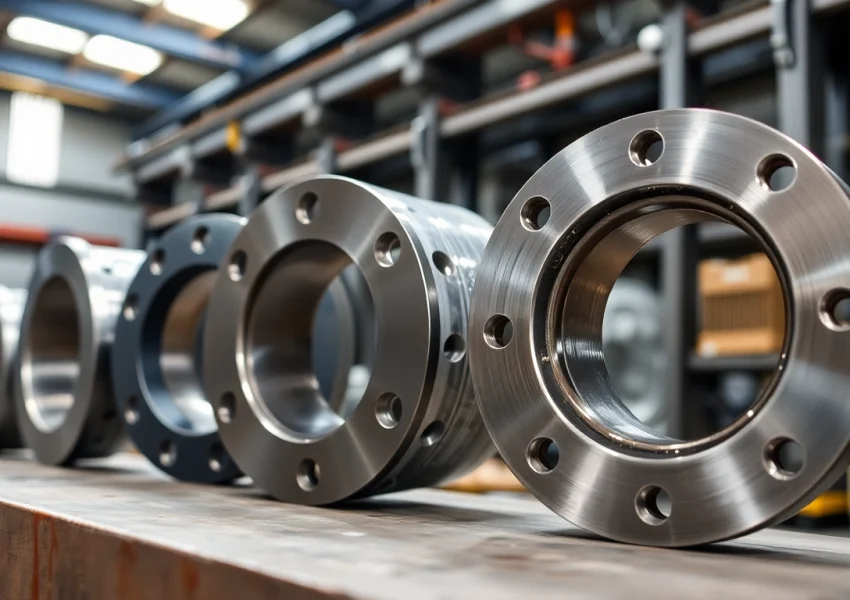Introduction to Laminating Resin
Laminating resins play a crucial role in various industrial and artistic applications, providing strength and durability to composite materials. These resins are commonly used in industries ranging from marine craftsmanship to automotive manufacturing. As professionals seek effective solutions for bonding and reinforcing materials, understanding laminating resin becomes essential. This article delves into the properties, uses, and best practices associated with laminating resin, ensuring that readers are well-informed and equipped to leverage its benefits. For a comprehensive understanding of laminating resin, we will explore its composition, characteristics, and application techniques.
What is Laminating Resin?
Laminating resin is a type of polymer that serves as a binding agent in composite materials. Typically, it is used to saturate fibrous substrates such as fiberglass, carbon fiber, or other reinforcements. This resin undergoes a chemical hardening process to form a durable and rigid structure, providing enhanced strength and resistance to environmental factors.
There are primarily two main types of laminating resins: polyester and epoxy. Each type has its own set of properties, making it suitable for specific applications. Polyester resins are favored for their cost-effectiveness and ease of use, while epoxy resins offer superior bonding strength and chemical resistance.
Types of Laminating Resin Available
Understanding the types of laminating resins is crucial for selecting the right product for your project. The main categories include:
- Polyester Laminating Resin: This is the most common type of laminating resin, characterized by its affordability and suitability for a variety of projects. It’s particularly popular in marine applications for creating boat hulls and other wet environments.
- Epoxy Laminating Resin: Known for its exceptional adhesion and durability, epoxy resin is used in high-stress applications. It is ideal for creating strong bonds between dissimilar materials and offers greater resistance to moisture, chemicals, and elevated temperatures.
- Vinyl Ester Laminating Resin: This type combines the properties of both polyester and epoxy resins, providing enhanced strength and resistance to corrosion. It is particularly suited for applications that demand higher performance, such as chemical storage tanks.
Common Uses and Applications
The versatility of laminating resin makes it suitable for numerous applications. Common uses include:
- Marine Construction: Laminating resin is widely used in building and repairing boats, ensuring structural integrity while being able to withstand water exposure.
- Automotive Parts: In automotive manufacturing, laminating resin is utilized in the production of body panels and structural components, providing lightweight yet strong alternatives to traditional materials.
- Sporting Goods: Many sporting equipment items, such as surfboards and bicycles, use laminating resin due to its lightweight and durable properties.
- Wind Energy: Laminating resin plays a critical role in the construction of wind turbine blades, enabling them to achieve the necessary strength and flexibility.
Understanding the Properties of Laminating Resin
Chemical Composition and Characteristics
Laminating resins are composed of various chemical compounds, primarily based on unsaturated polyesters or epoxies. The exact composition can vary significantly among manufacturers and specific formulations. Key characteristics of laminating resin include:
- Viscosity: This refers to the thickness of the resin, which can affect how easily it can be applied and how well it penetrates the reinforcing material.
- Curing Time: The time taken for the resin to harden and reach its full mechanical properties can range from minutes to hours, depending on the resin type and environmental conditions.
- Adhesion Properties: A crucial property determining how well the resin bonds with different substrates, influencing the overall strength of the composite material.
- Thermal Resistance: Different laminating resins have varying abilities to withstand temperature fluctuations, making some better suited for high-temperature applications.
Benefits of Using Laminating Resin
The use of laminating resin offers various advantages, including:
- Strength and Durability: Laminating resin creates a sturdy composite material that can withstand mechanic stress and environmental challenges.
- Design Flexibility: It allows for intricate designs and structures that may not be feasible with traditional materials.
- Cost-Effectiveness: Compared to other bonding materials, laminating resin can be more affordable and often requires less labor due to its ease of application.
- Variety of Applications: From marine to industrial use, laminating resin can be utilized in diverse fields, potentially opening new markets for manufacturers.
Limitations to Consider
While laminating resin presents numerous benefits, some limitations should be considered before usage:
- Environmental Sensitivity: Depending on the formulation, some laminating resins may be more sensitive to UV exposure, leading to degradation over time without proper protection.
- Health and Safety Concerns: Many laminating resins emit fumes that can be harmful if inhaled, necessitating proper ventilation and protective equipment during use.
- Long Curing Times: Some formulations may require lengthy curing periods, impacting production timelines, especially in high-demand scenarios.
Step-by-Step Guide to Using Laminating Resin
Preparing Your Workspace
Before starting any project involving laminating resin, it is important to prepare your workspace effectively:
- Clean the Area: Remove any debris, dust, and contaminants from surfaces where work will take place.
- Control the Environment: Ensure there is good ventilation and maintain a consistent temperature, as these factors can significantly affect curing times and resin performance.
- Gather Required Materials: Collect all necessary tools, including brushes, rollers, mixing containers, and safety gear (gloves, goggles, and masks).
- Read Instructions: Thoroughly read the manufacturer’s instructions for the specific laminating resin being used.
Mixing and Applying Laminating Resin
Proper mixing and application are key to achieving optimal results.
- Mixing: Follow the manufacturer’s guidelines for the correct resin-to-hardener ratio. Use a clean container and stir the mixture thoroughly to ensure a homogenous blend.
- Applying the Resin: Using a brush or roller, apply the mixed resin onto the substrate, ensuring even coverage. Pay particular attention to edges and corners where air bubbles are likely to form.
- Layering: If required, apply fiberglass or other reinforcement layers while the resin is still wet to ensure optimal bonding.
- Use Weight if Necessary: In applications requiring fiberglass matting, use a roller to help saturate the material and expel any trapped air.
Finishing Techniques After Application
Once the resin has cured, additional finishing techniques can enhance the aesthetic appeal and functionality of the final product:
- Sanding: After full curing, sand the surface using fine-grit sandpaper to achieve a smooth finish. It may be necessary to apply a coat of varnish or topcoat afterward for protection and improved appearance.
- Polishing: For a glossy finish, consider polishing the surface to enhance its visual attributes and protect against surface abrasions.
- Sealing: If the item will be exposed to moisture, a sealant can help protect against water damage and prolong its lifespan.
Best Practices for Working with Laminating Resin
Safety Precautions and Equipment
Safety must always be a priority when working with laminating resin. Consider the following best practices:
- Personal Protective Equipment: Always wear gloves, goggles, and masks to protect against harmful fumes and skin contact.
- Ventilation: Ensure your workspace is well-ventilated, utilizing fans or exhaust systems to minimize inhalation of vapors.
- Storage: Store resin products in cool, dry conditions according to manufacturer recommendations to prolong shelf life.
Quality Control During Application
To maintain high standards in production, implement rigorous quality control measures:
- Inspect Materials: Check the quality of the substrates and resins before use.
- Test Samples: Create test samples prior to full application to assess resin performance under expected conditions.
- Monitor Curing Conditions: Keep consistent temperature and humidity levels to ensure optimal curing.
Managing Curing Times and Conditions
Curing times can vary widely depending on the type of laminating resin used and the environmental conditions:
- Notes on Temperature: Warmer temperatures can accelerate curing, while cooler environments may necessitate extended curing periods.
- Humidity Control: High humidity can adversely affect curing, leading to surface imperfections.
- Time Management: Establish a timeline for your project that accounts for preparation, application, and curing to ensure timely completion.
Troubleshooting Common Issues with Laminating Resin
Identifying and Fixing Common Problems
Challenges may arise while working with laminating resin. Understanding common issues can help in troubleshooting effectively:
- Soft Spots: These may indicate incomplete curing due to improper mixing or environmental factors. Ensure correct ratios and stable temperatures during application.
- Bubbles: Air bubbles can form during application; using a roller adequately can help eliminate them. If bubbles persist, puncturing with a pin and reapplying resin may be necessary.
- Delamination: If layers peel away from each other, ensure that each application proceeds while the previous layer is still tacky for optimal adhesion.
FAQs About Laminating Resin Concerns
Here are several frequently asked questions regarding laminating resin:
- Can I use laminating resin for outdoor projects? Yes, but ensure you use UV-protected or specifically formulated products for outdoor exposure.
- What is the difference between laminating resin and epoxy? While both are binding agents, laminating resin typically has lower cost and ease of use, whereas epoxy provides superior bond strength and resistance.
- Is laminating resin waterproof? Once fully cured, laminating resin provides excellent waterproof properties, particularly when applied correctly.
Innovative Solutions for Improved Performance
To enhance the performance of laminating resin, consider innovative practices:
- Additives: Incorporating special additives can improve properties such as UV resistance, flexibility, and color options.
- Composite Techniques: Experiment with various laying patterns and material combinations to achieve desired strengths and aesthetics.
- Regular Research: Stay updated on advancements in resin technology and formulations to continuously improve your applications.






